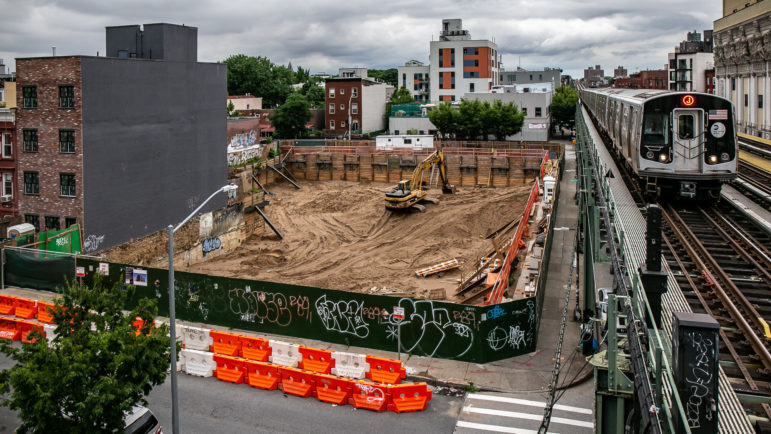‘In spite of its reputation as a progressive liberal bastion, New York City has failed to adopt a comprehensive and deliberate approach to end its own segregation.’

Adi Talwar
The report outlines how the city plans to expand existing programs and resources to meet its fair housing goals.New York City needs to do some soul-searching when it comes to racial segregation. Despite being considered America’s melting pot, after more than 50 years since the passage of the Fair Housing Act in 1968, our city’s residential neighborhoods are still suffering from a legacy of discrimination and segregation.
The Fair Housing Act was supposed to be a nod to the late Dr. King’s belief in housing justice’s power to also change disparities in education, healthcare, policing and wealth for America’s marginalized. In spite of its reputation as a progressive liberal bastion, New York City has failed to adopt a comprehensive and deliberate approach to end its own segregation. The result is a city where the 10-mile distance between the Upper East Side and Brownsville translates to a gap of $100,000 in median income and 12 years in life expectancy. Racial segregation is a root cause of these disparities. Solving this issue will impact all aspects of daily life and outcomes for people in poorer neighborhoods, increasing opportunities for economic mobility among the city’s poorest and fostering a more equitable New York.
According to racial and ethnic composition by Neighborhood Tabulation Areas (NTA), both white and Black New Yorkers have continued to concentrate themselves in specific areas of the city. Between 1990 and 2012-2016, white New Yorkers overwhelmingly fled to lower and midtown Manhattan, southern Brooklyn and Staten Island, becoming the predominant group (75 percent or more) in 16 NTAs.
 CityViews are readers’ opinions, not those of City Limits. Add your voice today!
CityViews are readers’ opinions, not those of City Limits. Add your voice today!
Black New Yorkers, by contrast, have remained largely absent from much of Manhattan, Brooklyn neighborhoods west and south of Prospect Park, and large parts of Queens and Staten Island since 1990, decreasing their population share in these areas by upwards of 48 percent in favor of neighborhoods such as East New York (Brooklyn), Harlem and Rosedale.
New York’s racial history is multifaceted, combining the influence of segregated housing developments, redlining and rampant discrimination in employment and education to relegate low-income people of color to small geographic areas of urban poverty. The devaluation and stigmatization of these neighborhoods has directly produced a legacy of disproportionate advantages and disadvantages in the most fundamental aspects of life, including wealth accumulation, crime, high school graduation, access to healthcare and life expectancy.
Decades of racist policy and sentiments have created the system we see today, solidifying racially segregated neighborhoods and unequal access to opportunity into the fabric of New York City.
In my time leading Riseboro Community Partnership, I have witnessed first-hand the effects of supply-side diagnoses that the de Blasio administration, among others, have implemented as part of the Where We Live NYC Plan. When we allow unrestricted development without regard for neighborhood context or affordability, we end up preserving segregation in low-income communities of color like Bushwick and Inwood. And while Mayor Bill de Blasio’s additions of SoHo and Gowanus to his rezoning plans are a step toward housing desegregation, New York needs to think about it on a larger scale. The benefits of this desegregation go far beyond benefiting marginalized communities, but rather extend to the entirety of our city. According to a recent EPJ Data Science study, researchers concluded that diversity of people flowing into a neighborhood may be the largest single factor driving human mobility, productivity, and economic growth. If New York continues on its path towards urban integration, widespread economic prosperity is inevitable.
At present, urban planning is conducted on a neighborhood-by-neighborhood basis, compelling city officials to solely address community desires. This current system has allowed for affordable housing to be welcomed into poorer Black and brown communities, inadvertently concentrating poverty, while whiter, more affluent areas preserve zoning regulations that perpetuate modern segregation. Real citywide planning, instead, can make a significant dent in segregation, disarming neighborhoods typically shielded from new rezoning initiatives, residents and public projects.
New York City has the potential to fully realize its capacity for change, but only if its urban planning widens its lens to address the city’s overall needs. The de Blasio administration has taken the important step of recognizing the legacy of housing segregation and its contribution to disparities across basic components of life. In the preamble to our mayoral election this fall, it will be incumbent on candidates to reassess our approach to overall equity within New York. Not addressing this component of life that touches every single resident would be a disservice.
No matter what, this city needs to reckon with its continuing history of systemic racism. Taking a city-wide approach to urban planning would be a step in the right direction.
Scott Short is the CEO of RiseBoro Community Partnership, a nonprofit dedicated to holistic community revitalization in New York City.









3 thoughts on “Opinion: What the City Must Do to Address its Checkered Past and Legacy of Segregation”
Yes, never let the people decide what goes into a neighborhood when you can an interloping, egg headed bureaucrat do it for you.
The op-ed’s author has raised an issue that has been a historically grotesque reality, amongst other grotesque realities that poor brown and black communities have endured since the creation of NYC. From the settler colonist land theft perpetrated against the original indigenous inhabitants to the parasitic real estate development industry, BIPOC communities have been effectively marginalized. In conjunction with the systemic segregation is the shameful, criminal reality of homelessness. NYC has always been an epicenter of inequality, injustice and dismissive inhumanity toward BIPOC communities. The author is stating the obscenely obvious yet fails to mention the root cause- our neoliberal, white supremacist, socioeconomic system which serves Wall Street as opposed to creating a system that puts the well-being of all people and Mother Earth front and center…
From a lifetime boricua new yorker, raised in the south bronx nycha housing projects..con todo respeto, Ralph “Rafa” DuMont (former executive director of 2 nfp human services cbos, social worker for over 30 years and current public intellectual and critic.) rdumont331@gmail.com
Peace…
‘…Between 1990 and 2012-2016, white New Yorkers overwhelmingly fled to lower and midtown Manhattan, southern Brooklyn and Staten Island, becoming the predominant group (75 percent or more) in 16 NTAs…’
Fleeing crime and decay as I did in 1990 moving from Kensington, Brooklyn to the east shore of Staten Island. And now guess what? Many nice hard-working middle-class Chinese-American families are also heading to Staten Island, fleeing Brooklyn crime and crowding. Note how most of the assaults on Asians are committed by African-Americans in Brooklyn and Manhattan. Interesting how none (maybe 1) of these assaults have taken place on Staten Island.